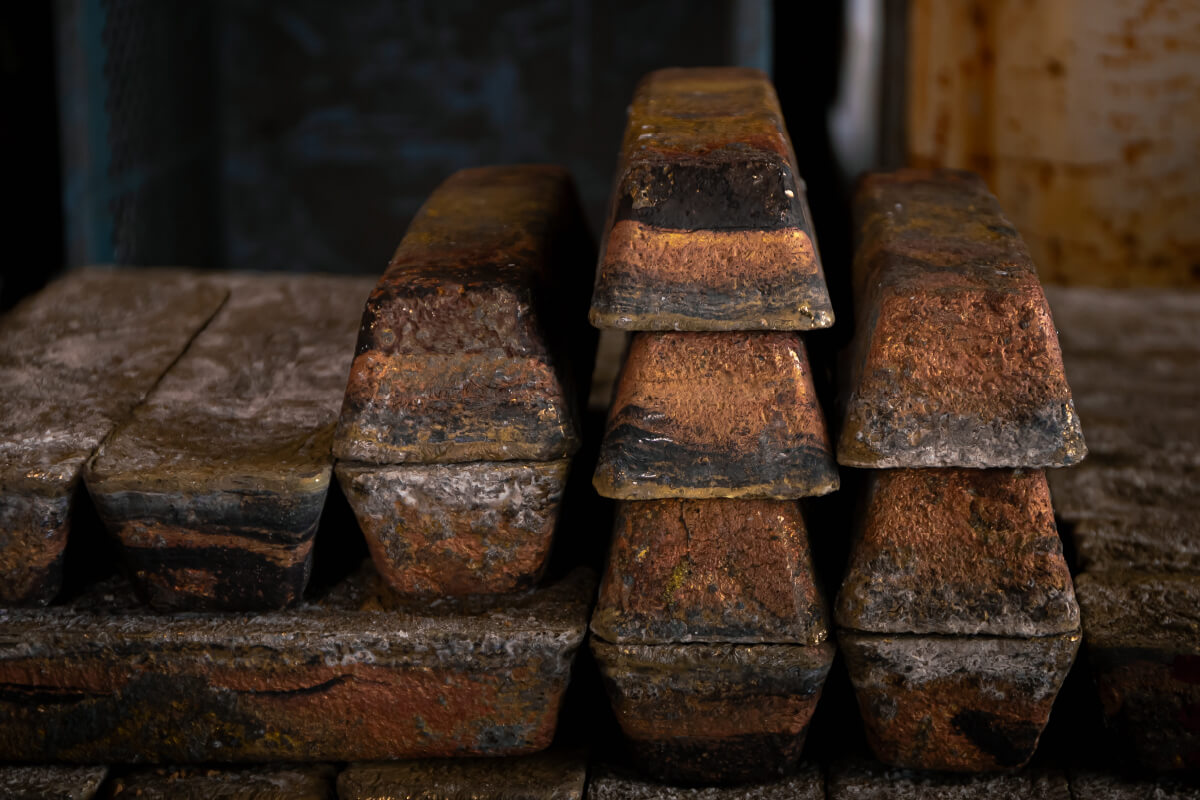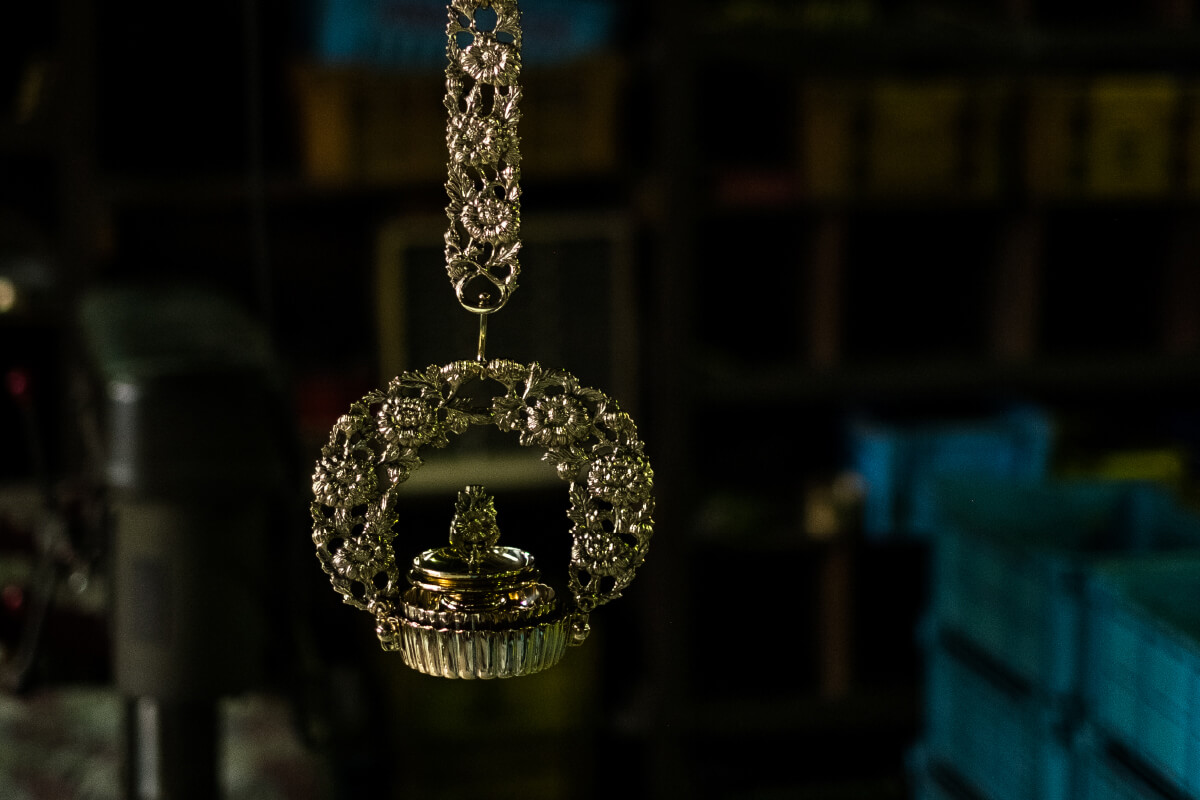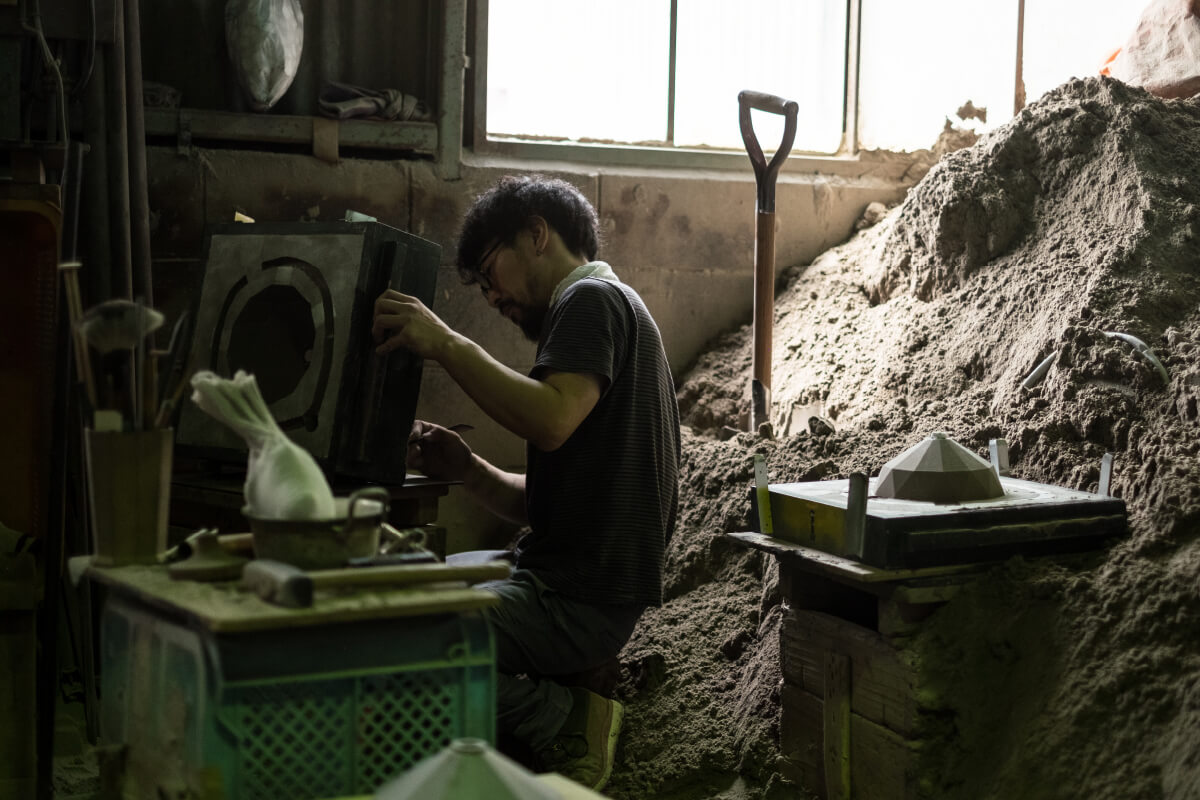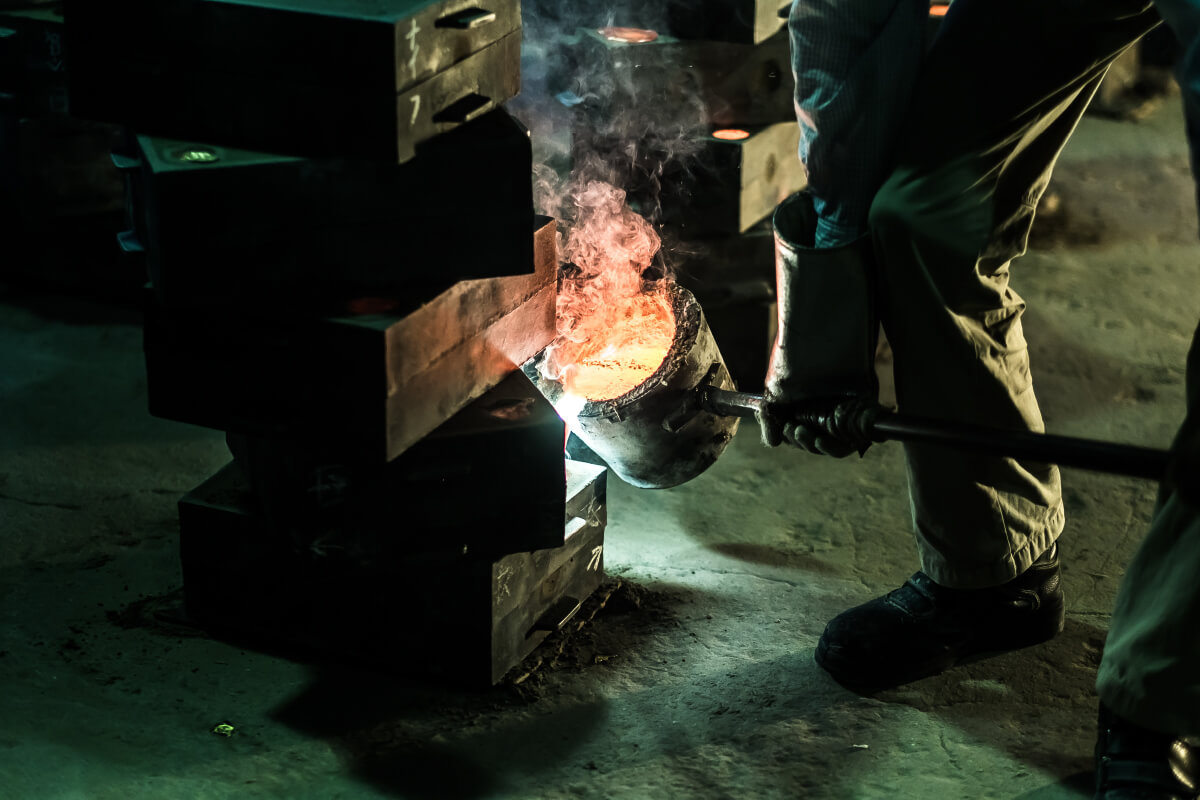process
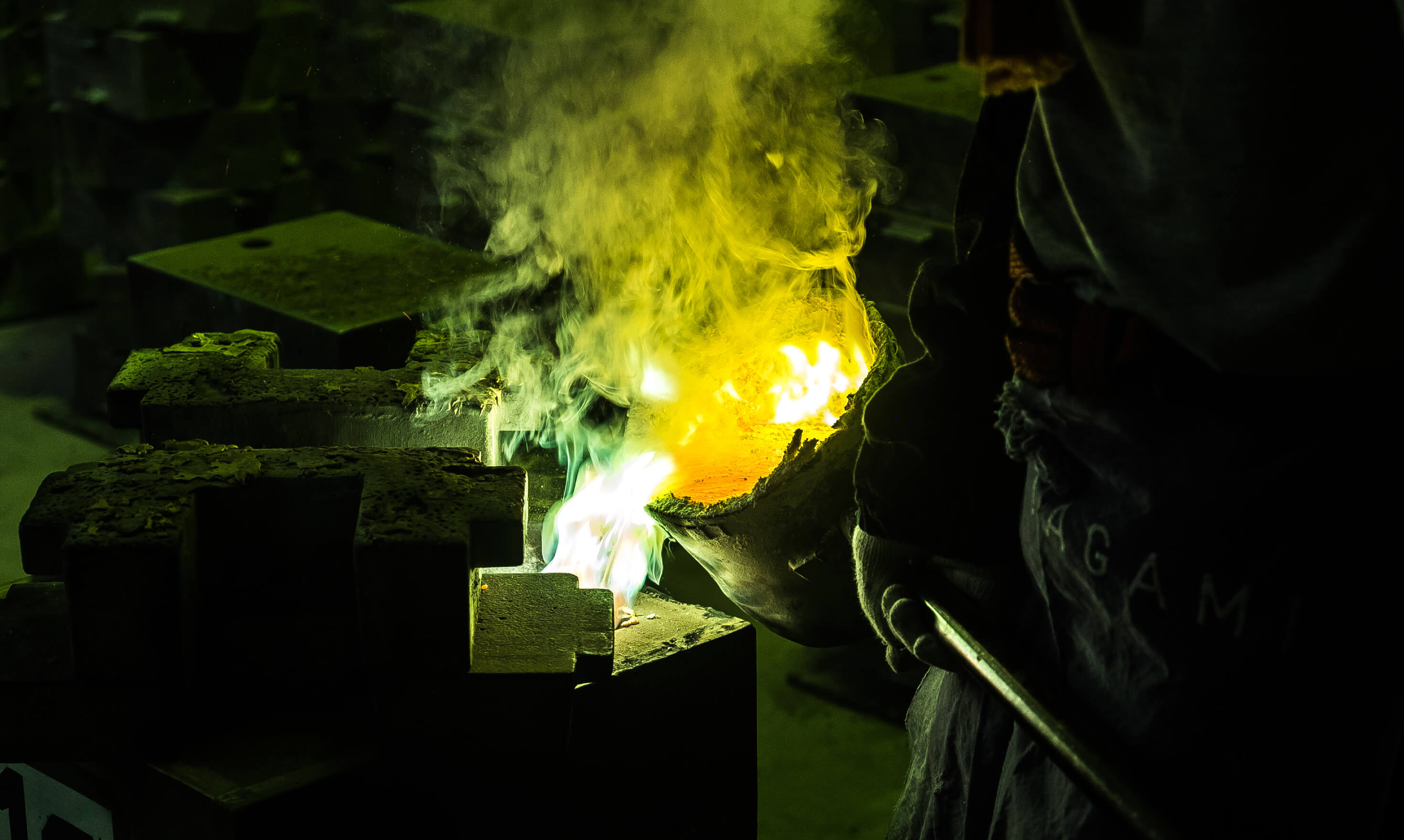
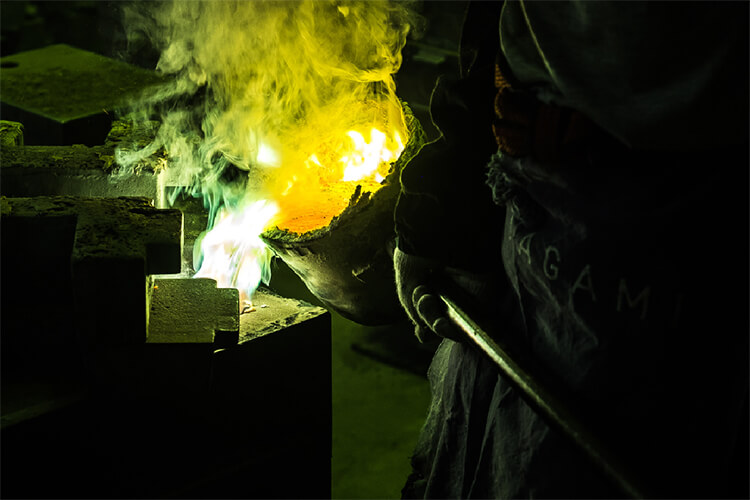
素材Material
真鍮Brass
真鍮とは銅と亜鉛の合金で、黄銅とも言われる。おおよそ6:4の割合を基準に、求める特性によりバランスを変えたり添加物を配合する。
真鍮は耐食性、耐摩耗性が良好で色味も良く、古くから美術鋳物、機械鋳物として多く使われてきている。
Brass is an alloy of copper and zinc.The standard ratio is roughly 6:4, but the balance can be changed or additives can be blended in, depending on the characteristics desired.Brass has been widely used for art and machine castings for centuries, for its excellent corrosion and wear resistance, as well as its pleasing color.
ブロンズBronze
真鍮と同じく銅合金の一種で青銅の事。配合は、銅、錫、亜鉛、鉛の合金。用途により配合は変わる。
青銅は大気中で酸化され表面に炭酸塩を生じて緑青を発生し青銅色となる。
Bronze is another copper alloy, similar to brass, and is composed of copper, tin, zinc, and lead. The proportions of each vary by application.Bronze oxidizes over time when exposed to air, producing carbonates on the surface that form a blue-green patina known as verdigris.
製造方法Production method
生型鋳造Green Sand Casting
鋳型に鋳物砂を使い、焼成や乾燥などせずにそのまま鋳造するため生型という。
木製や金属製の上下枠に製品と同じ形の種型をいれて砂をつめて固める。一般的で安価、量産性にたけている。
This method uses molds made of casting sand, which is not fired or dried, but left in a wet (or “green”) state when used for casting. A master mold, which is shaped just like the product, is placed in a molding box split into upper and lower parts made of wood or metal, and the box is completely packed with sand. A popular, inexpensive method, suitable for mass production.
ロストワックス鋳造Lost-Wax Casting
ロウ(ワックス)を利用した鋳造方法。ワックスで原型をつくり周りを砂で覆い固め、その後焼成加熱してワックスを溶かしだし、できた空洞に金属を流し込むと原型と同じ形の鋳物が得られる。原型は金型やシリコン型によって製作する。
A casting method using wax: a model made of wax is firmly packed in sand. This is then fired and heated to melt the wax, leaving a cavity. Molten metal is then poured in, to form a casting of the same shape as the original model. The initial models are made using metal or silicone molds.
石膏鋳造Plaster Mold Casting
ロストワックス鋳造と同じく精密鋳造の一種で鋳型に石膏を使用する。高精度・高品質、美しい鋳肌の仕上がりと緻細な凹凸も正確に表現できることが特徴。金型不要で、コスト性にも優れている。
A type of precision casting similar to lost-wax casting, wherein plaster is used to make the molds. The resulting high-precision, high-quality castings have a beautiful surface finish, where even the fine texture of the surface is perfectly reproduced. Because it does not require metal molds, this method is also cost-effective.
